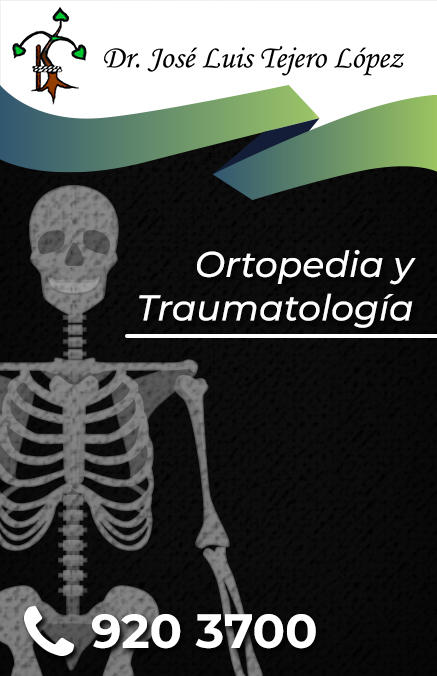What is shoulder dislocation?
A joint is formed when two bones are contacted to generate a movement. These contract a cartilage surface and are maintained by a wrapping called joint capsule, which is reinforced by ligaments that are inserted in both bones. The term dislocation means that there is a displacement of one of the bones of the joint, losing the contact between them. In common terms, we could say that one of the bones leaves its usual position.
The shoulder is formed by the union between the glenoid (joint surface of the scapula) and the head of the humerus. When the humeral head leaves its position, losing contact with glenoids, a shoulder dislocation has occurred.
How does shoulder dislocation occur?
It usually occurs when it is brought to the shoulder to limit positions of its normal range of movement. The most frequent thing is that it occurs when the shoulder is forced to an abduction position and external rotation. This can occur during a fall with the support of the affected arm or in high-energy accidents by a direct blow. It is common to occur in contact sports. In people with repetition dislocation episodes, this can occur with minimal movements, even voluntarily due to the laxity that have acquired damaged tissues.
What are the symptoms?
The main symptom is the abrupt home pain associated with the feeling of having the shoulder out of its position. In general, the picture is evident. 95% of the times shoulder dislocation is former, so that a deformity in the affected shoulder associated with the inability to perform movements due to the intense pain can be observed. On some occasions, it can be accompanied by neurological damage that will leave the patient without the possibility of moving or feeling his upper limb. Fortunately, in most cases this is transient. The pain will only pass when the shoulder is reduced to its normal position. Within the similar clinical tables that must be differentiated, the acromioclavicular disjunction is found, which also causes deformity and shoulder pain.
What happens inside the shoulder?
The main structure damaged in a shoulder dislocation is the articular labrum. The Labrum is a fibrocartilage ring that is inserted into the edge of the joint, mainly to increase the contact surface between both bones and contribute to the stabilization of the humeral head into the joint. In addition, there is an injury in the capsule and the ligaments that reinforce it. The Labrum, the capsule and the ligaments have the possibility of healing after an episode of dislocation. The problem is that, if it happens again, these elements become more and more lax, losing their stabilizing capacity. This causes the shoulder to become unstable and luxe again more easily. In addition, in patients over 40 years, it is necessary to evaluate if an injury was caused in the rotator cuff, since, older, this tissue becomes less elastic being frequently injured in shoulder dislocations.
Most common hip injuries
With the passage of time and carrying out repetitive movements, a wear wear of the hip that becomes a degenerative disease that we know as osteoarthritis.
In addition to age and sex (more frequent in men than in women), other factors such as overload, obesity, trauma, low physical activity or genetic inheritance also influence the appearance of the disease.
The most characteristic symptom is pain in the groin, which can be extended to the thigh, knee and buttock, as well as the feeling of & quot; bones rubbing against bones & quot; and the inability to perform routine movements with the articulation.
Its treatment is not limited to anti-inflammatory, analgesics or rehabilitation, but in the most severe cases, surgery is necessary. Also the infiltration of rich plasma in growth factors gives good results for the regeneration of the affected tissue.
Bursitis | Soft tissue lesions | hip bursitis
Like in other joints, on the hip we have a bag (Bursa) that contains synovial fluid and served to cushion the & quot; shock & quot; Between bones and tendons. When this bag becomes inflamed, a bursitis occurs.
Trauma, continuous pressure, sports activities, infections, gout, diabetes or rheumatoid arthritis are some of the causes that can produce this damage in the Bursa.
The most frequent symptoms are pain, inflammation and rigidity on the hip or thigh, being its acute intensity in the first moments, but transforming to deaf and continued the following days.
It is an injury that can be repetitive and become chronicle.
Medication, rest, physiotherapy, weight loss, liquid extraction and even surgery (bursectomy) can be some of the treatments to be applied, depending on the intensity of the lesion.
Fractures | Bone lesions | Hip Fractures
The hip is an articulation in which a ball-shaped bone (the head of the femur) fits into a cavity of another bone (pelvis acetabulum).
Although they are very stable joints, they allow a lot of movements without any problem, when they suffer a very strong blow (for example, by a fall, for excessive use or by the practice of some sports), a hip fracture can be produced This
In people of a certain age, for loss of bone mass and osteoporosis, which make bones weaker, the frequency of these injuries is greater, and may have very serious consequences if it is not adequately.
The most frequent fractures in hip joint are the fracture of the neck of the femur and the intertocantic fracture.
Hip fracture is a serious injury that requires immediate attention and in most cases you will need surgery for its resolution. For its part, the recovery is slow and its duration will depend on the scope of the injury, the age of the patient, its tolerance to medications and treatments and, of course, its general health status.
Luxations | Bone lesions | Hip dislocation
We say that there has been a dislocation when, the ends of the bones that should be embedded in the joints (femur and pelvis), come out of its normal site.
Is what is also known as & quot; dislocation & quot; And it usually occurs as a consequence of accidents in which the hip suffers a very strong and dry impact.
When this happens, a sudden and very acute pain occurs, removing the distorted and unstable joint, and preventing rotation movements.
Two types of dislocations are distinguished - adreterior and posterior - depending on where the articular surface of the femur compared to the tibia.
The diagnosis must be carried out by a trauma and its treatment will be analgesia, the reduction of the injury - only the specialist must be performed, since it is very easy to damage the joint-, rest and download. In many cases, surgery will be necessary.
Necrosis | Bone lesions | Necrossed hip replacement
The bones are & quot; feed & quot; of the blood that reaches them through the vessels. If at some point that bloody irrigation is missing at a bone, there is a necrosis or osteonecrosis, that is, the & quot; death of the bone due to lack of blood irrigation & quot;
Because of his anatomy, the head of the femur has few blood vessels that take him blood. By blows, fractures, dislocations or obstruction of the vessels (embolism), it is not difficult for these vessels to be obstructed or injured, leaving the bone without & quot; food & quot;
When this happens, the bone is deformed and breaking until staying & quot; plane & quot;, what produces a persistent pain that leads to rigidity, pain in the groin, the thigh and knee, as well as muscle atrophy and limp. >
Generally, the solution for necrosis is a surgical intervention that replaces the bone damaged by a prosthesis.
Reumatisms | Bone lesions | Hip rheumatoid arthritis
making a simple definition, generically is called rheumatism to the processes that are accessed with pain and rigidity in the muscle-skeletal system, regardless of its origin.
It is not a disease in itself, but a set of symptoms that usually manifests from 40 or 50 years, and which attacks women more than men.
Rheumatoid arthritis is generated when lubrication and muscles decreases and tendons do not slide gently. This causes a & quot; ROPE & QUOT; In the hip articulation and gives rise to deformity, inflammation and pain, which can also feel on the thigh and knee.
It can be of two types: joint and non-articular, according to the interior of the joint or the outer structures (such as tendons and muscles), so its treatment will be different in each case, from rehabilitation to oral medication, infiltrations or surgery.
Synovitis | Soft tissue lesions | Synovitis
Synovitis is an inflammation of the soft tissues of the hip that causes acute pain in the groin, the hip or the front face of the thigh (front part). These discomfort produce limp and very limited mobility.
The causes are not clear, but it is associated with trauma or genetic predispositions. Interestingly, in children it is also frequent that it occurs after having suffered a respiratory infection.
Depending on the intensity and characteristics of the patient, the treatment will be with anti-inflammatories, extraction of the synovial fluid, rest and rehabilitation.
glutenet tendinitis | Soft tissue lesions | gluteus tendinitis
Glutetish tendinitis is the degeneration and inflammation of the muscles, average and / or minor gluteus muscles, a very frequent injury between athletes who practice & quot sports; impact & quot; (Running, Aerobic, Step, etc.), and that can be produced both by direct trauma and repetitive movements.
Because it is manifested with a lateral pain in the hip and discomfort when walking or sitting, its diagnosis is not easy and can be easily confused, so it is also known as false trocavernitis.
Depending on the intensity, it will be treated with rest, anti-inflammatories, physiotherapy and although it is not frequent, surgery will be necessary.
Trocantelitis | Soft parts lesions
Trocanutitis is a condition that is characterized by a chronic pain located on the side of the hip, just in the larger trochanter that is next to the head of the femur and which is the insertion point of the gluteus musculature . This pain increases when walking, when climbing stairs or sitting on that side.
In general, the origin is degenerative and is more frequent in women, due to the skeletal configuration of the pelvis.
Depending on the status of each patient, the treatment will be with anti-inflammatories, rest, rehabilitation or infiltrations.









